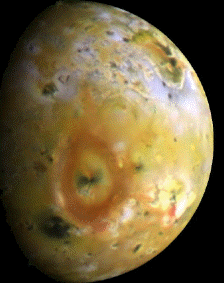
Its ephemeral, unstable atmosphere is too thin to trap any heat, so Io’s average surface temperature is -202☏. Thanks to its weird volcanism, Io is a world of freakish extremes. Learn about the ancient planet's origin story, its Great Red Spot and oceanic moons, and how this ancient world influenced the formation of the solar system's other planets. Jupiter is the oldest and most massive world in the solar system. This pattern of orbital resonance means that Io’s orbit is forced to be more elliptical than it otherwise would be, and the resulting gravitational tugs among the moons make Io’s solid surface ebb and flow by as much as 330 feet.Ĭombined with Jupiter’s gravitational pull, this orbital ballet generates a huge amount of frictional heating inside Io that ultimately produces a lot of magma, something that a 1979 paper predicted even before anyone saw volcanic plumes on its surface. As it turns out, for every single orbit Io makes around the gas giant, Europa orbits twice and Ganymede orbits four times. These larger moons, discovered by Galileo Galilei in 1610, are all visible from Earth with a small telescope. Io is one of the four so-called Galilean moons of Jupiter, along with Europa, Ganymede, and Callisto. Instead, it’s a result of its strange orbital shenanigans. Unlike Earth’s erupting peaks and vents, Io’s volcanism isn’t powered by trapped heat left over from its formation or by the decay of naturally occurring radioactive compounds in its rocks. “It’s a window into Earth’s past,” Davies says. After all, the profuse but geochemically primitive eruptions on Io are similar to those that once took place on Earth, so looking at Io is a way of understanding large-volume eruptions that happened here within the last 500 million years or so.
Io moon dimensions full#
While the new data are full of these and other mysteries, they are also a “gift to the planetary science community,” says study coauthor Ashley Davies, a volcanologist at NASA’s Jet Propulsion Laboratory. ( Explore the many intriguing moons of the solar system in our interactive atlas.) Volcanoes don’t seem to be in the right places, the brightest eruptions seem largely confined to just one hemisphere, and Loki Patera-a 8,100-square-mile depression filled with lava-steadfastly refuses to play by anyone’s rules. The research also confirms that Io is even stranger and more difficult to explain than anyone thought.

Their work, recently published in The Astronomical Journal, reminds us how far we’ve come since Voyager delivered those first grainy images of plumes on Io. Now, scientists pouring over five years’ worth of images taken from the top of a Hawaiian volcano have unveiled the most detailed atlas yet of this unusual moon. Io’s powerful eruptions can produce plumes of epic proportions, sometimes reaching heights of 300 miles.

Some of its hundreds of fiery craters are many times more expansive than our largest cities. Roughly 40 years ago, the Voyager 1 spacecraft sailed past one of Jupiter’s large moons, and it revealed something amazing: The rocky moon, called Io, is a volcanic champion, featuring the first erupting volcanoes seen anywhere other than Earth.


 0 kommentar(er)
0 kommentar(er)
